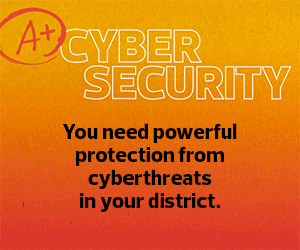What Is Identity and Access Management?
IAM security is not only a way to monitor and manage access, but also a way to provide a more personalized digital experience for students, parents and teachers who access the system, whether from home or from school.
A common IAM solution is single sign-on (SSO), an authentication method that allows users to log in once with a single ID and password and access services without needing to re-enter credentials.
Not having to remember multiple passwords reduces the risk of stolen or misplaced passwords. SSO solutions can also greatly increase efficiency, especially for understaffed schools or large schools that have hundreds of new students to create accounts for each year — and just as many to remove from the system.
To add another layer of protection, schools can require advanced multifactor authentication, or MFA. This requires the user to verify unique and personal knowledge (a password), a recognizable possession (a trusted device, such as the user’s cellphone) and perhaps biometric data (a fingerprint).
KEEP READING: Build in an extra layer of network security with these five tips.
And because cybercriminals are constantly changing their attack strategies, adaptive access is another IAM tool that can help a school’s IT admin team continually assess risk levels when users access applications and services.
A step up from SSO, an adaptive access solution builds a user profile based on information when access is requested, including geolocation, device, time of day and data accessed. If the request seems unusual based on past behavior, the user will be prompted to provide additional verification.
How Does Identity and Access Management Security Work in K–12 Schools?
Without the tools of an IAM system, schools are an “easy target for cybercriminals,” says Wes Gyure, director of strategy and offering management at IBM Security. This is largely because many K–12 districts have limited cybersecurity training and budgets.
“IAM solutions are put in place to help schools protect valuable data, including school records and personal information on students and educators, which is a key target for cybercriminals,” Gyure explains. “Given that schools are dealing with minors’ personally identifiable information, there are also data privacy laws that they must comply with. This makes it even more important to validate who is accessing what data, whether they have the appropriate entitlements, and that they are who they say they are.”
There are plenty of IAM solutions available for schools to choose from, depending on compatibility, budget, and current and future tech needs. IBM offers Verify SaaS, which provides identity, governance and access management in a single cloud-native solution. AWS Single Sign-On and Cisco Duo Security Access, an MFA solution, are both integral IAM tools that can also help schools move slowly but steadily toward a zero-trust security model, which is one of the strictest approaches to cybersecurity.
LEARN MORE: Discover the fundamentals of zero-trust security.
How simple is it for school admin and staff to learn and configure an IAM system? “If done right, there should be minimal friction for the user,” Gyure says. “Today, there are modern IAM systems that offer users access to all of their content and SaaS applications from a single launchpad, where they even have the ability to reset and manage passwords.”










